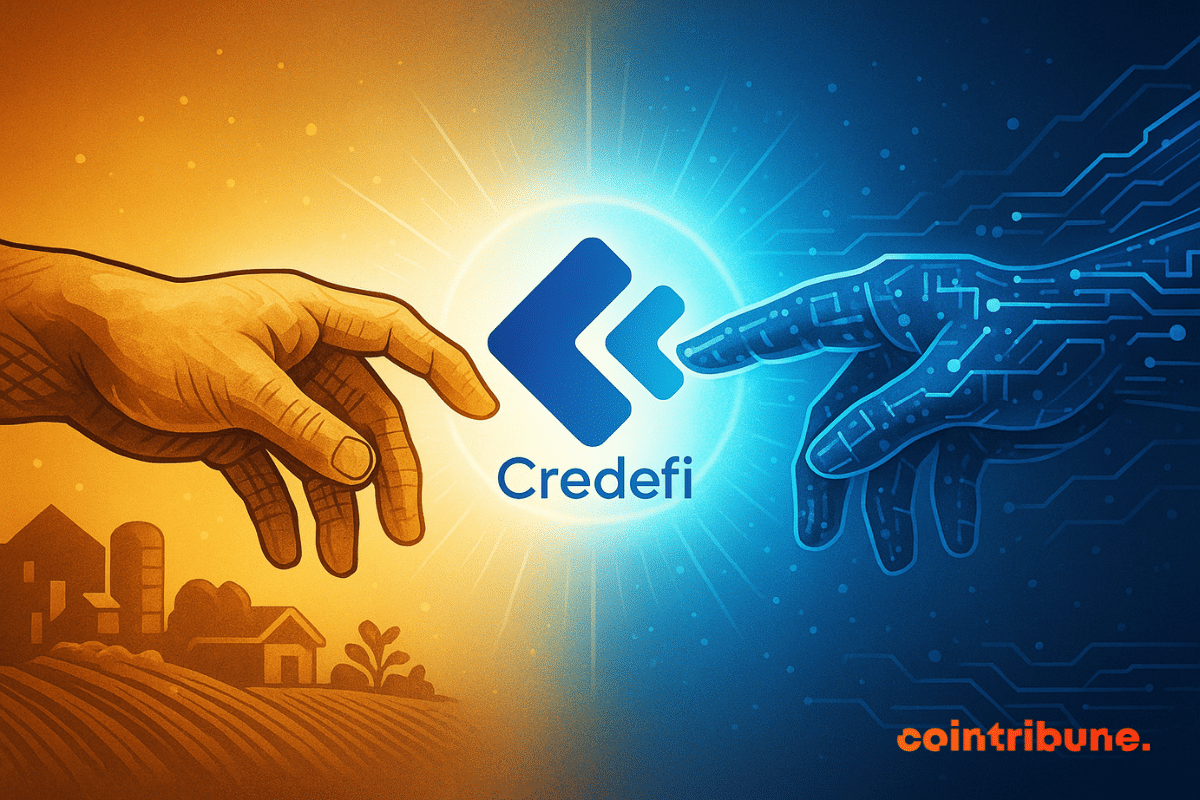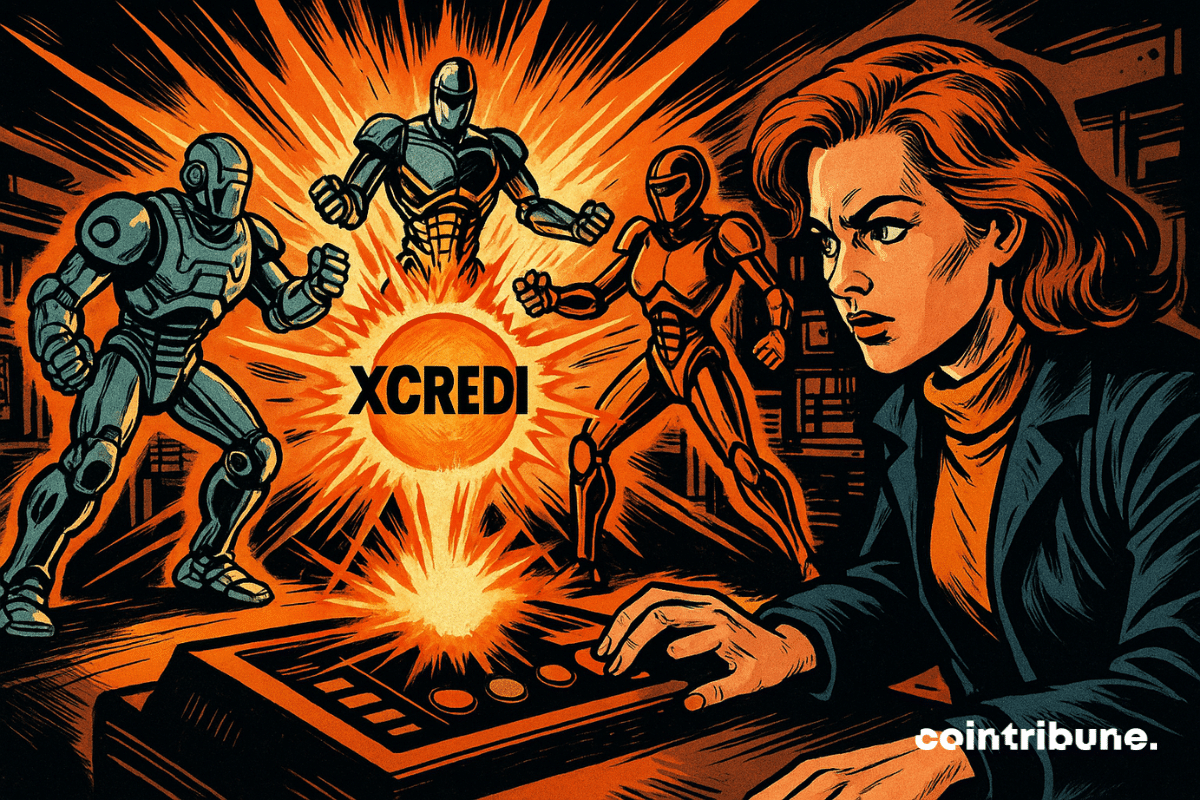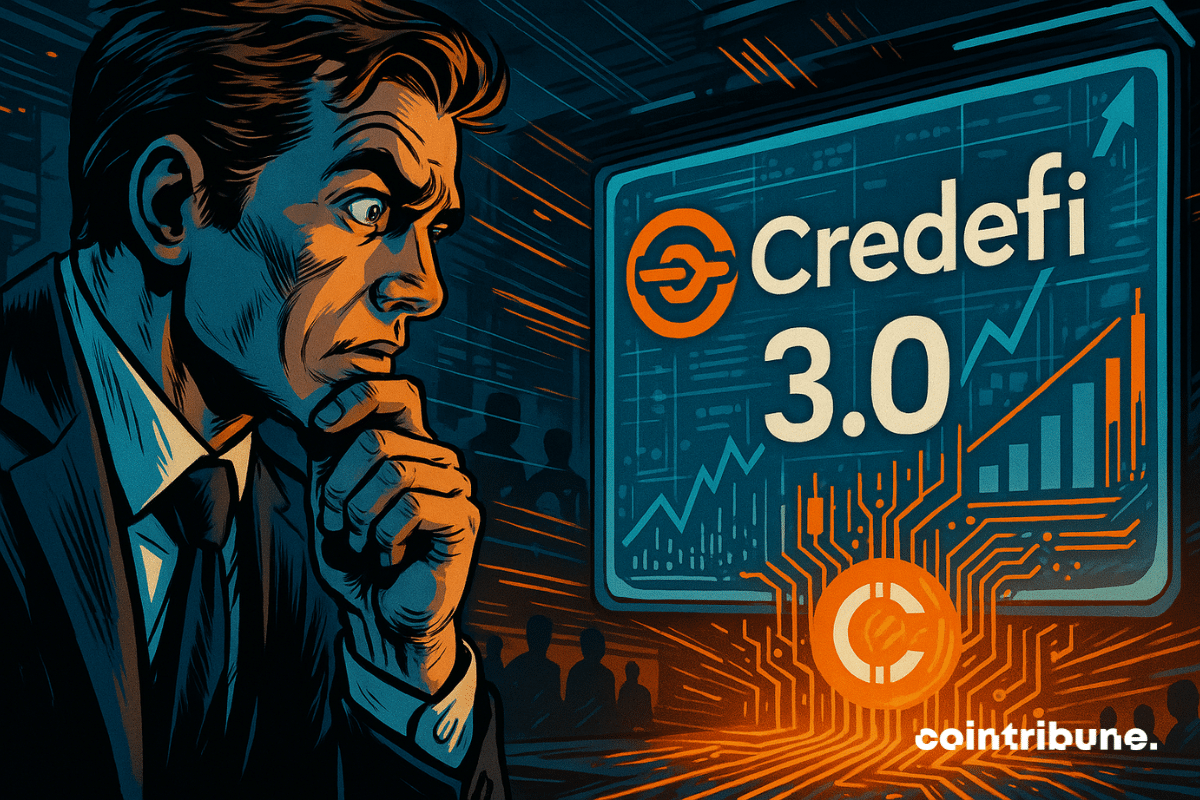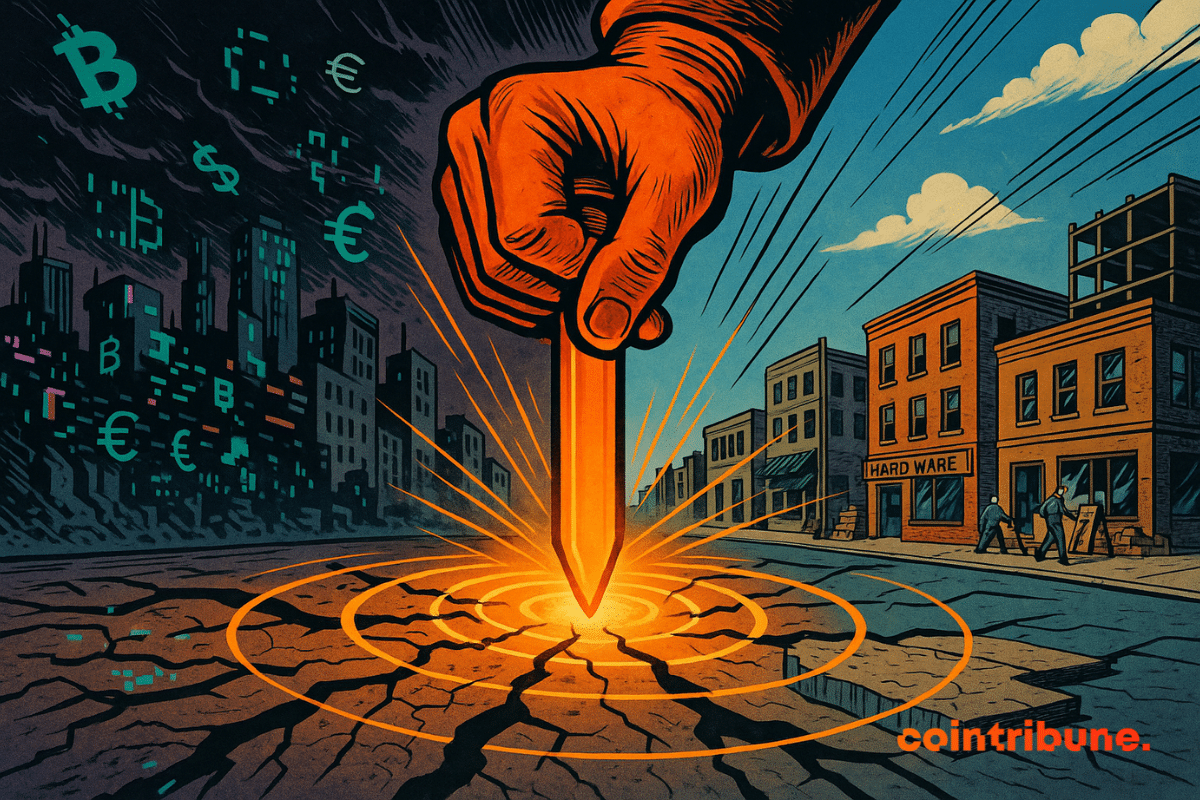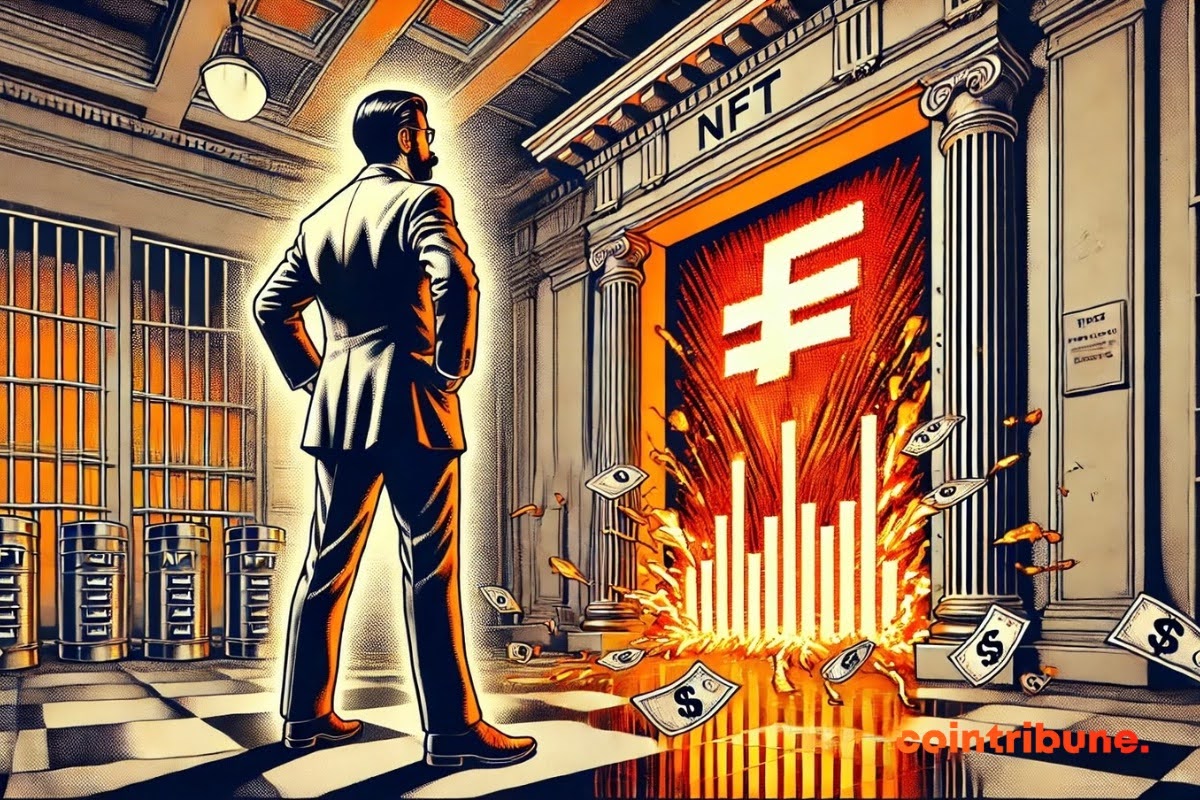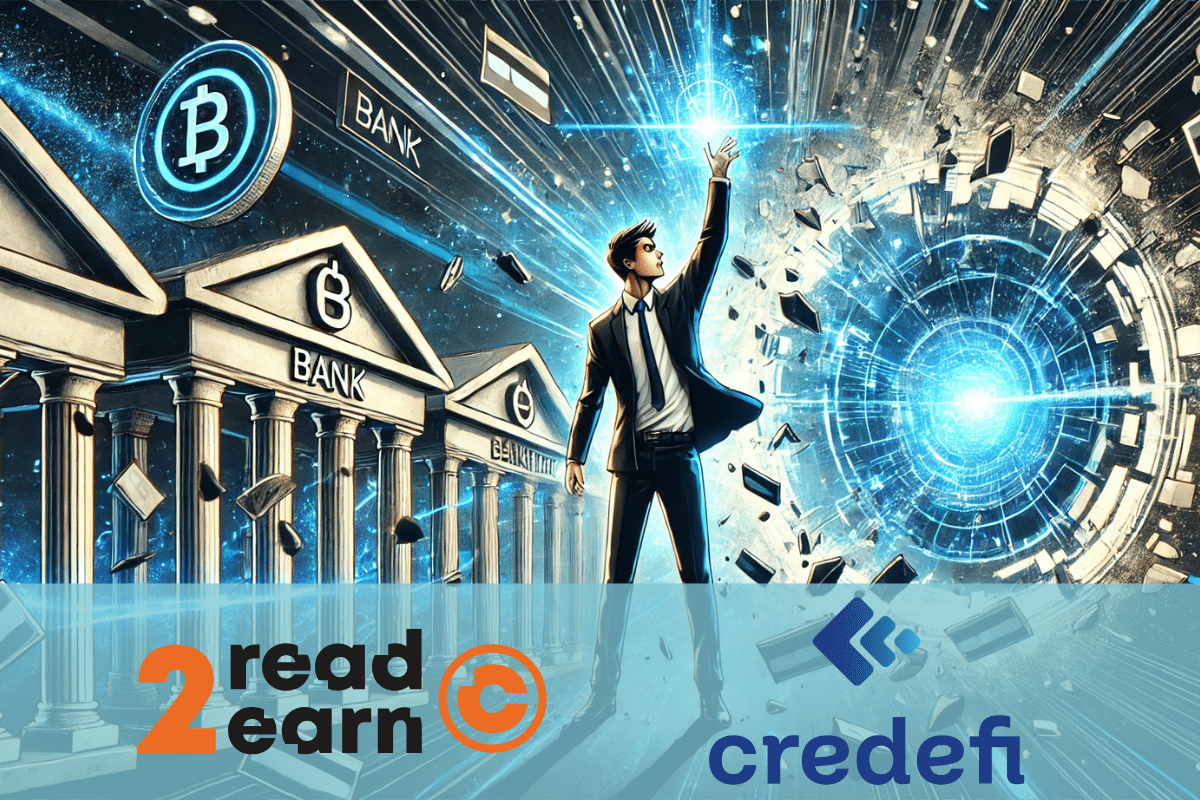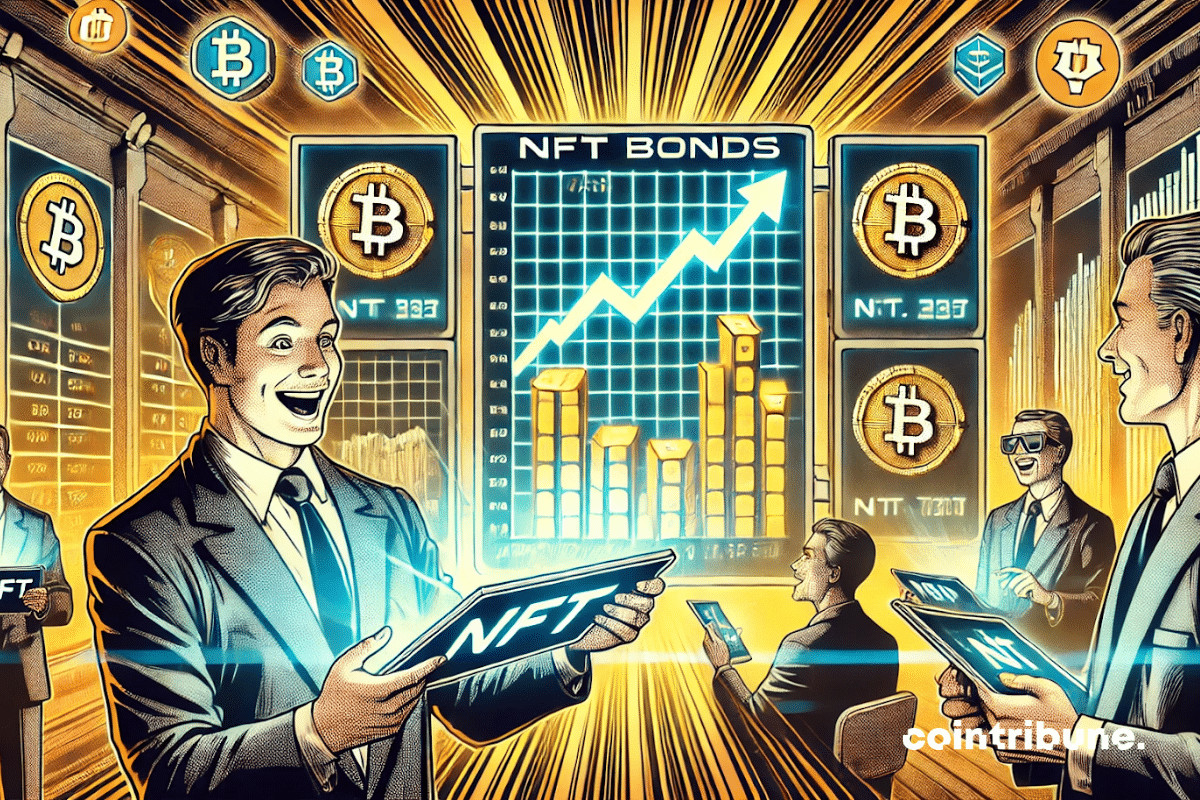The Real-World Asset (RWA) tokenization market is experiencing exponential growth, rising from $85 million in 2020 to $24 billion in June 2025, a 308-fold increase in three years according to the latest reports from RedStone, Gauntlet, and RWA.xyz. In this context of radical transformation of financial markets, Stobox and REAL Finance have signed a Memorandum of Understanding (MoU) to explore new technical and commercial synergies between regulated tokenization platforms and emerging blockchain networks.
credefipubuk
The real-world asset tokenization (RWA) market is exploding in 2025, surpassing $25 billion in on-chain assets. But while most platforms sacrifice security, trust, or decentralization to move fast, Real Finance arrives with a radically different approach: solving the RWA trilemma. Comparative analysis of an infrastructure that could redefine industry standards.
The startup unveils a layer-1 infrastructure dedicated to RWAs, backed by Wiener Privatbank and designed to solve the security-decentralization-compliance "trilemma".
The tokenization of real assets (RWA - Real World Assets) represents one of the most promising sectors of the crypto ecosystem in 2025-2026. The integration of recognized assets on the blockchain through RWAs constitutes a significant innovation that is a central narrative of the 2024-2025 crypto season. In this dynamic context, Real Finance (REAL) positions itself as a major player by developing a complete infrastructure to facilitate the integration of real-world assets into the Web3 ecosystem.
Credefi launches its groundbreaking Platform 3.0 with xCREDI staking at 34% APY and permissionless RWA lending via Brickken.
The asset tokenizer Brickken and the decentralized credit protocol Credefi announced, on July 28, 2025, a strategic partnership marking a major breakthrough in the convergence between regulated tokenization and decentralized finance. From now on, holders of shares or bonds tokenized via Brickken can use these securities as collateral to borrow USDC directly on Credefi, through a permissionless, peer-to-peer, and non-custodial mechanism.
Credefi announces a partnership with Vayana, described as the largest TradFi platform in India, to deploy tokenized debt instruments in a fully compliant framework and open them to DeFi investors. Beyond the marketing signal, the agreement marks a regulated channel between crypto capital and real financing needs (SMEs, supply chains) in one of the fastest growing economies.
Since its inception, Credefi has established itself as a solid bridge between traditional finance and blockchain. With its new version V3, the platform reaches a decisive milestone. Its goal is to provide a simpler, faster, and more profitable ecosystem for users seeking yield and exposure to real-world assets (RWA). This upgrade marks the end of V2 and the beginning of a new unified architecture, based on efficiency, DeFi partnerships, and a reimagined staking model.
Independence Day for the United States, July 4th embodies more than just a national holiday. It is an ode to audacity, vision, and innovation. This symbolic date has been chosen by Credefi to mark a decisive turning point: its official entry into the American market. From Silicon Valley, the European DeFi protocol asserts its commitment to anchoring decentralized finance in the real economy. Far from being a mere publicity stunt, this expansion reflects a thoughtful strategy, an engaging dialogue with traditional finance, and a clear ambition: to connect the worlds of blockchain and tangible assets, from Sofia to Wall Street.
The world of tokenized real world assets (Real World Assets - RWA) is undergoing transformation as it gradually aligns with the real economy. In this context, Credefi has experienced continuous evolution, moving from an experimental project to a functional infrastructure. With the launch of Credefi 3.0, the platform reaches a new milestone: it fully integrates modules designed to connect decentralized finance and tangible assets. All tools are now available online.
At a time when DeFi is reinventing uses through groundbreaking innovations, certain trends are literally exploding. In this technological cacophony, RWA — these tokenized real-world assets — are tracing a stunning trajectory: +260% by 2025, for a market of 23 billion dollars. Behind this figure lies a promise: that of tangible, stable returns, grounded in the real economy. A remedy for crypto volatility, a bridge to the traditional world. "Real yield is the new grail," insiders are already whispering. And at the heart of this rise in power, Credefi is quietly laying out its game.
In a world where DeFi still has to prove itself, Credefi emerges at the right moment. Its mission? To offer useful finance, rooted in the real economy. At TOKEN2049, the global summit of Web3, the team was able to connect investors and tangible assets. Their model, based on European SMEs, combines security and yield. Away from the noise, Credefi moves forward methodically. And this is just the beginning. If Europe is its foundation, the United States will be its next conquest, with a discreet yet solid strategy. The direction is clear. The tempo, perfectly controlled.
2025 marks a turning point for Real-World Assets (RWA) in decentralized finance. Long regarded as the missing link between the real economy and Web3, RWAs are finally gaining momentum thanks to blockchain infrastructures designed for the concrete use cases of trade financing. Among the pioneers of this convergence are Credefi and XDC Network, who are announcing a strategic alliance to democratize access to tokenized credit for European SMEs, with real guarantees, stable returns, and end-to-end regulatory compliance.
The traditional bond market remains complex, opaque, and reserved for an elite. Credefi is shaking up these norms by launching NFT Bonds, an innovative solution that makes investing in corporate bonds accessible, transparent, and profitable for everyone, thanks to the tokenization of real assets and the power of DeFi.
Cointribune is happy to invite you to participate in its new Read to Earn (R2E) quest on Credefi. This unique initiative not only allows you to earn crypto rewards but also to deepen your knowledge about this DeFi platform and the tools to succeed in this crypto field.
Crypto loans provide an alternative to traditional financing, offering borrowers a fast, flexible, and accessible solution. Unlike banks, these loans allow access to capital without intermediaries, ensuring transparent and secure conditions. Credefi stands out in this sector by combining decentralized finance (DeFi) and traditional finance (TradFi) to offer loans backed by real-world assets (RWA). By leveraging smart contracts, the platform automates fund management and reduces risks. This article explores how crypto loans work on Credefi, the available solutions, and their applications for businesses and investors.
Staking has become one of the most popular ways to generate passive income in the DeFi universe. It allows investors to lock their tokens to secure a network while receiving rewards in return. Credefi offers an innovative staking model based on Module X, a mechanism designed to provide competitive yields while protecting investors. With its governance token xCREDI, participants benefit from enhanced security and a more direct involvement. This article explores how staking works on Credefi, its yield opportunities, and the best strategies to maximize profits while minimizing risks.
Obtaining appropriate financing remains a major challenge for small and medium-sized enterprises (SMEs). Traditional banking solutions impose strict conditions, long timelines, and high collateral requirements. In the face of these obstacles, many businesses are seeking more flexible alternatives. Credefi is revolutionizing financing by combining decentralized finance (DeFi) and traditional finance. Through the integration of blockchain and real-world assets (RWA), the platform offers quick, secure, and accessible loans for SMEs. This article explores the financing solutions offered by Credefi, highlighting their impact on the growth and financial management of businesses.
Tokenized loans are revolutionizing investment by combining the advantages of DeFi and traditional finance. By tokenizing debt instruments, they offer better liquidity, greater transparency, and easier access to funding. Credefi leverages this innovation by allowing investment in loans secured by real-world assets (RWA), transformed into fractional NFT bonds. This approach ensures stable returns, optimal fund security, and decentralized management of investments. This article explores how tokenized loans work, their advantages, and their integration within the Credefi ecosystem.
Real-world assets (RWA) provide a crucial solution for stabilizing decentralized finance (DeFi). Unlike purely crypto loans, RWAs offer tangible collateral, thereby reducing default risk and attracting institutional investors. Currently, DeFi suffers from high volatility, a lack of physical collateral, and limited access to structured financing. These challenges hinder its large-scale adoption. Credefi addresses these issues by integrating RWAs into its lending solutions, combining the security of traditional assets with the transparency and efficiency of blockchain. This article explores how Credefi facilitates investment in RWAs to enhance the security and profitability of DeFi.
Credefi establishes itself as an innovative platform that merges traditional finance (TradFi) and decentralized finance (DeFi) to provide a secure alternative for lending and investment. While TradFi struggles to meet the financing needs of small and medium-sized enterprises (SMEs), DeFi still suffers from high volatility and a lack of institutional recognition. Credefi addresses these issues by combining real-world assets (RWA) as collateral, a credit scoring model validated by Experian, and advanced regulatory compliance solutions. This article explores how Credefi builds a bridge between these two worlds to make DeFi more accessible to institutional investors.
Traditional loans suffer from administrative burdens, high collateral requirements, and prolonged timelines. In parallel, decentralized finance (DeFi) offers a faster and more accessible alternative, but still faces challenges related to volatility and the lack of a structured regulatory framework. Credefi provides an innovative response by combining the strengths of TradFi and DeFi. Its platform allows access to secured loans, backed by real-world assets (RWA) and recorded on the blockchain. This article explores how Credefi is revolutionizing DeFi lending with its hybrid solutions, blending transparency, stability, and accessibility.
Credefi Finance is set to redefine the investment landscape by launching the first NFT Bonds. This innovative product bridges traditional finance and blockchain technology, making high-yield investments accessible to a wider audience.
The evolution of the financial market is following an increasingly digital trajectory, and NFT Bonds (tokenized bonds in the form of NFTs) are emerging as a major innovation. In a world where blockchain is redefining access to financial instruments, players like Credefi are taking a pioneering role by integrating these bonds onto the blockchain, making these products accessible and liquid.
The integration of tokenized real-world assets (RWA) into decentralized finance (DeFi) opens up new opportunities for investors and borrowers. Credefi, as a DeFi lending platform specialized in financing SMEs and trade, is well positioned to capitalize on this trend and offer attractive returns while mitigating the risks of the crypto market.




